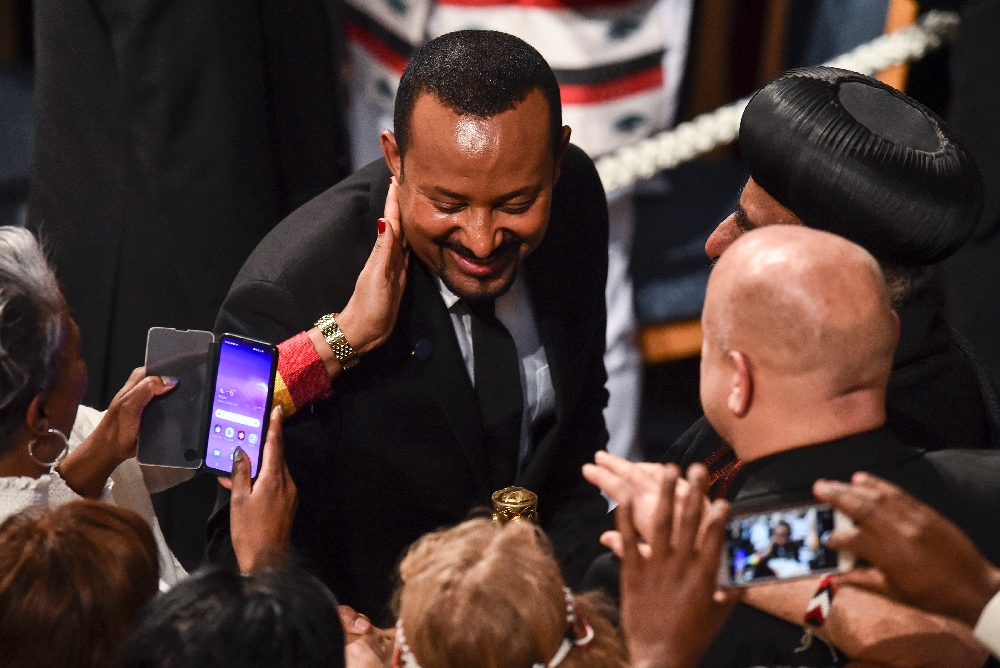Ethiopia’s national elections will draw in voters from seven of 10 semi-autonomous regions, highlighting the country’s rich history and striking diversity.
The regional system dates back to the early 1990s and was designed to allow for ethnic self-rule.
From the mountains of northern Tigray to the savannah of Ethiopia’s south, the regions feature distinct landscapes and languages – and their own tensions that will shape the outcome of balloting.
Here is a look at some of the key Ethiopian states:
Oromia
Prime Minister Abiy Ahmed, who hopes the elections will deliver him a popular mandate, is the first Ethiopian leader to hail from the most populous region, Oromia.
He assumed the office in 2018 on the back of several years of anti-government protests led by ethnic Oromo youth denouncing perceived economic and political marginalisation.
But while protesters cheered Abiy’s appointment, Oromia remains as restive as ever.
These days, prominent Oromo nationalists like Jawar Mohammed denounce Abiy as a poor champion of their interests. They have been at the centre of protests — and subsequent crackdowns — that have killed hundreds.
The shooting death a year ago of Oromo singer Hachalu Hundessa kicked off an especially bloody conflagration that spurred mass arrests targeting, among others, Jawar and his fellow Oromo opposition leader Bekele Gerba.
Two of the most prominent Oromo opposition parties, the Oromo Federalist Congress and the Oromo Liberation Front, are not participating in this year’s vote, complaining their candidates have been arrested and their offices vandalised.
Campaigning has thus been muted across the region.
Amhara
A more competitive race is expected in Ethiopia’s Amhara region, the second most populous.
Amhara youth also joined the protest movement that swept Abiy to power in 2018, but the local arm of Abiy’s Prosperity Party now faces stiff resistance from the more hard-line opposition National Movement for Amhara (NAMA).
The region has experienced its share of turmoil under Abiy.
Two years ago forces commanded by the Amhara security chief killed the region’s president and other top officials in what Abiy’s office described as a failed “regional coup” bid.
More recently Amhara security forces have played a prominent role in the seven-month-old conflict in Tigray, backing up the army while annexing parts of Tigray that Amhara leaders claim belong to them.
Their involvement, particularly in western Tigray, has drawn global denunciation, with US Secretary of State Antony Blinken lambasting what he describes as “ethnic cleansing”.
Amhara also abuts Sudan and risks being drawn further into a simmering conflict over the disputed Al-Fashqa region, where Ethiopian farmers cultivate fertile land claimed by Khartoum.
Tigray
There will be no voting at all for now in Tigray, where world leaders warn the fighting is birthing a humanitarian catastrophe.
For decades the northernmost region was headed by the Tigray People’s Liberation Front (TPLF), which led the charge to oust longtime dictator Mengistu Hailemariam in the early 1990s and then dominated Ethiopia’s ruling coalition until Abiy took office.
Mutual tensions spilled over into war last November when Abiy sent in troops, a move he said came in response to TPLF attacks on federal army camps.
But while Abiy, winner of the 2019 Nobel Peace Prize, vowed the conflict would be brief, intense fighting persists in much of the region, reports of atrocities continue to proliferate, and UN agencies say some 350,000 people are enduring famine conditions.
Benishangul-Gumuz
Long considered one of Ethiopia’s more peripheral regions, Benishangul-Gumuz gained new prominence in 2011 when then-Prime Minister Meles Zenawi launched construction of the Grand Ethiopian Renaissance Dam, a mega-project on the Blue Nile River that Ethiopians see as the solution to their power and development woes.
The dam, a rare unifying issue within Ethiopia, has triggered a protracted diplomatic dispute with downstream countries Sudan and Egypt, who worry it will jeopardise essential water supplies.
Benishangul-Gumuz has also been the site of some of Ethiopia’s worst ethnic violence in recent years, with repeated massacres making voting impossible in four constituencies there.
Southern Nations, Nationalities and People’s Region
Multiple ethnic groups in the Southern Nations, Nationalities, and Peoples’ region (SNNPR) have taken advantage of Abiy’s premiership, and his initial push to liberalise Ethiopia’s democratic space, to demand expanded rights.
Around 10 groups in the south have long wanted to form their own regions, a move permitted under the constitution.
So far only the Sidama people have succeeded, overwhelmingly backing the creation of their own region – the country’s 10th – in a November 2019 referendum.
A separate referendum to create a new South West region, comprised of five zones and one smaller administrative area, will be held on September 6.
Source: AFP


